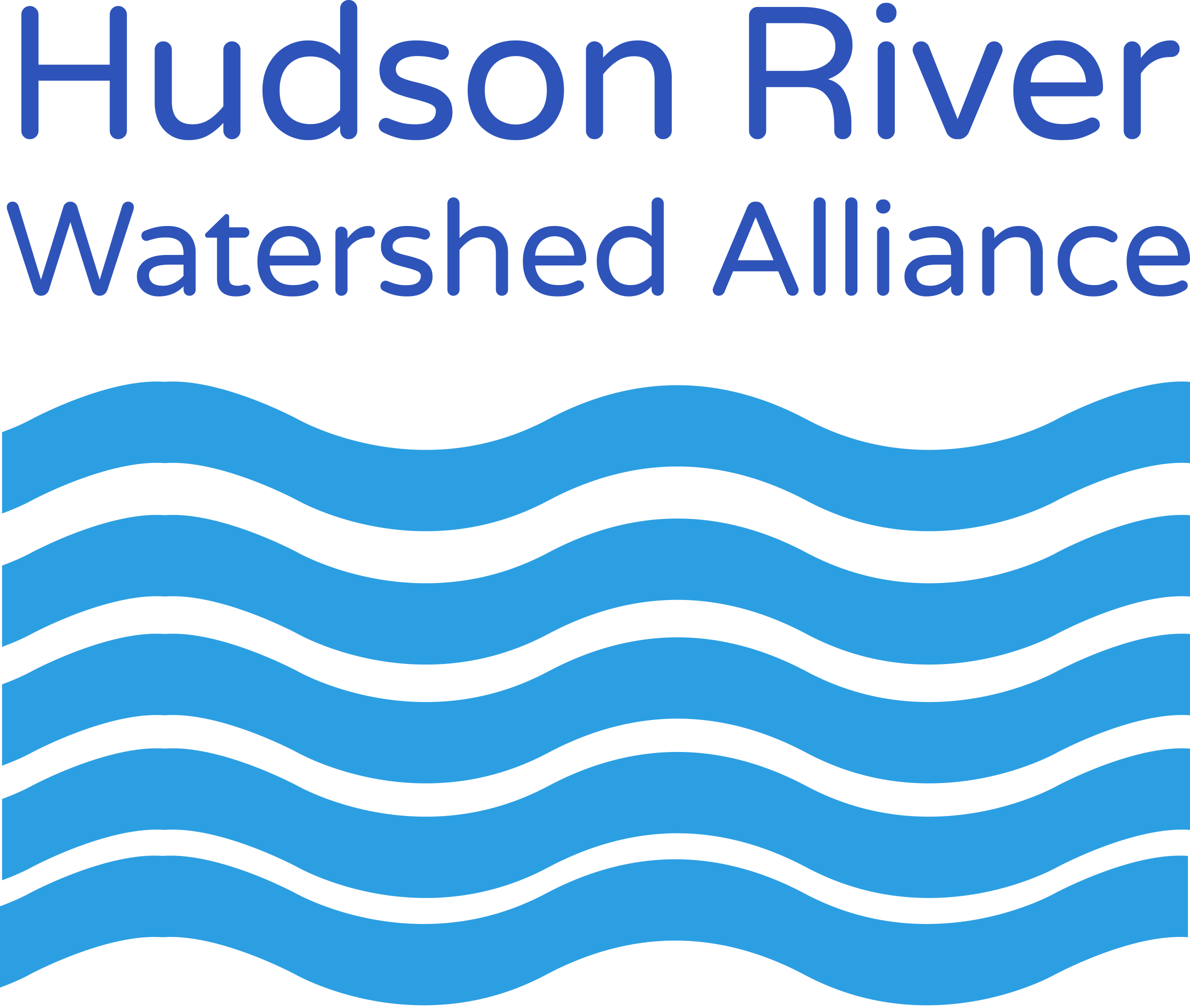Stormwater runoff can be a significant cause of water pollution – espeically in urban and suburban areas where there are considerable hard surfaces (pavement, sidewalks, roofs, etc) which prevent snow melt and rainfall from soaking into the ground. In these areas rain or snow melt drains through engineered collection systems of gutters, storm drains, and pipes, which drain into local waterways. Along its journey, stormwater runoff can collect heavy metals, bacteria, garbage, and other pollutants from the urban/suburban landscape.
Although stormwater impacts can be mitigated by building gray infastructure – additional engineered hardscape infastructure like piped drainage – an alternative option is green infastructure – using natural processes to absorb and filter stormwater using soils, gravels, and native plants, while providing habitat, flood protection, and improved air and water quality.
2012-2013: Village of Nyack, New York
In 2012-2013, the Hudson River Watershed Alliance with support from the NYS DEC Hudson River Estuary Program worked on a technical support project for green infrastructure (GI) and low impact development code review in the Village of Nyack in Rockland County, New York. The aim of this work was to create a set of recommendations for promoting and expanding the use of green infrastructure in Nyack to protect the water quality of the local streams and the Hudson River. This was a collaborative with a committee of Village of Nyack officials and other local stakeholders. The roundtable series concluded in 2013 and a final written report and presentation was delivered to the Nyack Village Board at their meeting in June 2013. It recommended specific actions for the sustainable development of the village, including clarifying design opportunities and code requirements, pursuing incentive opportunities, establishing programs for public outreach and pilot projects, and amending the code to meet Nyack’s needs as a small, urbanized community.
Nyack started its assessment with the Code and Ordinance Worksheet that originally was developed by the Center for Watershed Protection in Maryland and later was modified at the NYS DEC Hudson River Estuary Program. Nyack modeled the initial approach to the roundtable’s structure on the structure of the worksheet and the previous roundtables conducted in the Towns of Wappingers and Clinton. However, given Nyack’s urbanized setting, the committee found that the existing worksheet was not fully appropriate for this kind of community. The Nyack GI Report provides a useful starting point for revised and expanded guidance materials.
Final Report for Nyack: Nyack GI Final Report (PDF, 848 KB).
2014: Town of Orangetown, New York
In 2014, the Hudson River Watershed Alliance focused on providing additional GI technical support, another individual municipal code review process similar to the one in Nyack. The Alliance developed resources to address a specific provision of the NY State regulations for MS4s that call for MS4 municipalities to address GI goals in their comprehensive plans, zoning and other codes and plans. Specifically, the MS4 permit states these municipalities should “consider principles of Low Impact Development (LID), Better Site Design (BSD), and other Green Infrastructure practices”, and “review, and revise where appropriate, local codes and laws that include provisions that preclude green infrastructure or construction techniques that minimize or reduce pollutant loadings.” Based on research and outreach, the Alliance confirmed that there is no existing guidance material for MS4 municipalities in New York that is specifically aimed at helping them implement these provisions of the MS4 permit for reviewing and revising local plans and codes.
Based on these conclusions and focused on the Town of Orangetown in Rockland County, the Alliance in 2014 set out to complete necessary preparatory work for code review in Orangetown including compiling available documents from the Town and completing preliminary planning discussions with town staff and officials and other stakeholders; to review existing code in Orangetown to develop recommendations for revisions to support green infrastructure implementation and related water quality improvement measures; and to meet with Orangetown representatives and other relevant stakeholders to review progress, obtain input and discuss draft recommendations during the process. The final report from this six-month process was submitted to the Town Supervisor in November 2014.
Final Report for Orangetown: Municipal Code Update for Water Quality, Flood Control and Regulatory Compliance Based on Green Infrastructure Standards for the Town of Orangetown (949 KB, PDF), Code Review Worksheet (323 KB, PDF)
Case Study on Green Infrastructure Code Review
The Alliance produced a report describing our green infrastructure code review projects conducted in two communities in Rockland County – the Village of Nyack and the Town of Orangetown. Recognizing the need for local revisions to effectively support and promote the use of green infrastructure (GI), the NYS Department of Environmental Conservation (DEC) and the US EPA encourage communities to assess their codes to identify barriers to green infrastructure and have developed scorecards to simplify the process. These scorecards provide a framework for developing recommendations that communities have used for more extended discussion, analysis and consensus-building to achieve code changes and plan other actions. Examining how the Nyack and Orangetown projects made use of the scorecard and reports based on this framework from other communities provides some lessons that may be useful to for those interested in carrying out similar work.
Case Study: Adding Green Infrastructure to Local Codes: Lessons from Two Rockland County Projects (1.7 MB, PDF)

